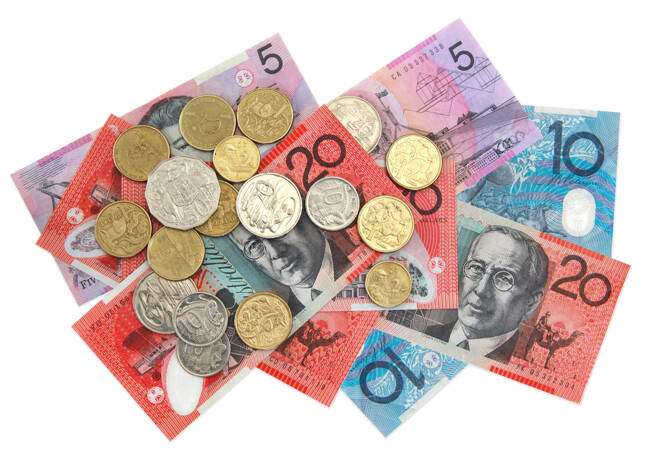Advertisement
Advertisement
Australian Dollar Gives Up Early Gains
Updated: Jan 11, 2022, 14:28 GMT+00:00
Yet again on Tuesday, we have seen sellers come in and push back on the Australian dollar as it tries to rally against the greenback.
The Australian dollar initially rallied during the trading session on Tuesday but has given up early gains to show less than favorable results. Ultimately, this is a market that continues to look a bit limp in comparison to some of the other major currency pairs. Because of this, I do believe that the Aussie dollar is under threat, and then it could go looking towards the bottom of the Friday candlestick. If it does break down below that candlestick, then it opens up a move down towards the 0.70 level, which would be a simple retest of major support underneath.
AUD/USD Video 12.01.22
Furthermore, you could make an argument for a bit of a bearish flag, which of course is a very bearish sign in and of itself, and measures for a move to somewhere near the 0.67 handle, an area that has mattered more than once on longer-term charts. Because of this, I believe that any time the Australian dollar rallies, you have to seriously consider shorting the market, simply because it cannot seem to hang on to gains at all. Furthermore, the 0.7275 level has been like a “brick wall”, and we did of course give up after trying to break above that area multiple times.
Because of this, I think that the Aussie is probably going to continue to find plenty of resistance, and therefore with rising interest rates in the United States it does make a significant amount of sense that we drop from here. After all, the Australian dollar is highly levered to “risk on” type of behavior, which of course is in short supply currently.
For a look at all of today’s economic events, check out our economic calendar.
About the Author
Christopher Lewisauthor
Chris is a proprietary trader with more than 20 years of experience across various markets, including currencies, indices and commodities. As a senior analyst at FXEmpire since the website’s early days, he offers readers advanced market perspectives to navigate today’s financial landscape with confidence.
Advertisement
